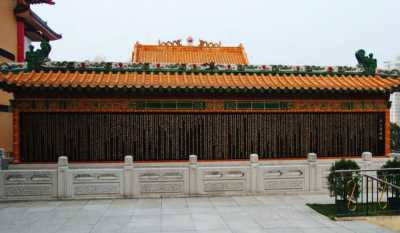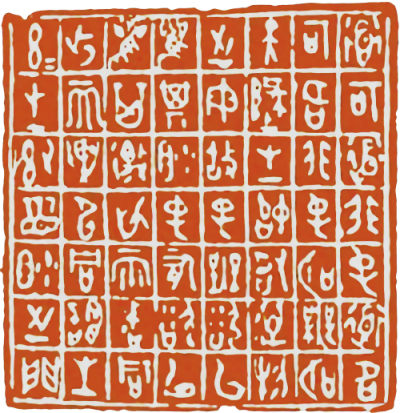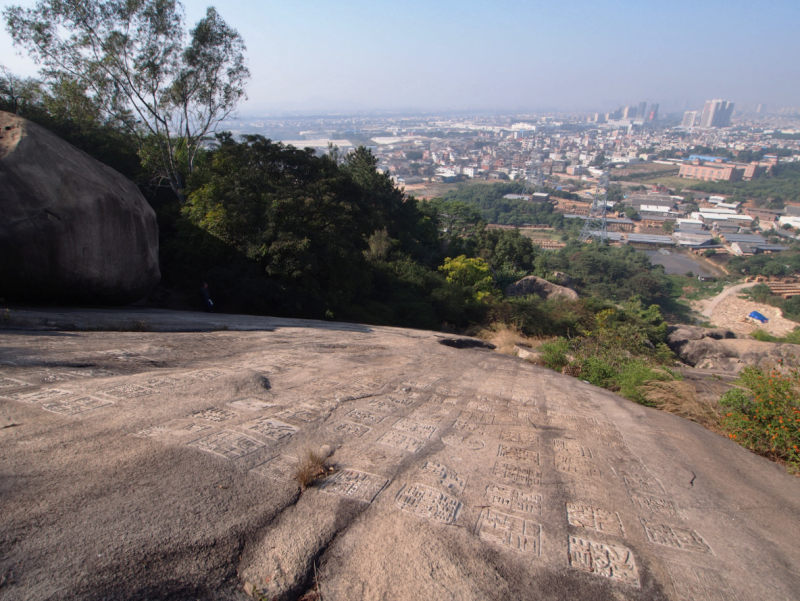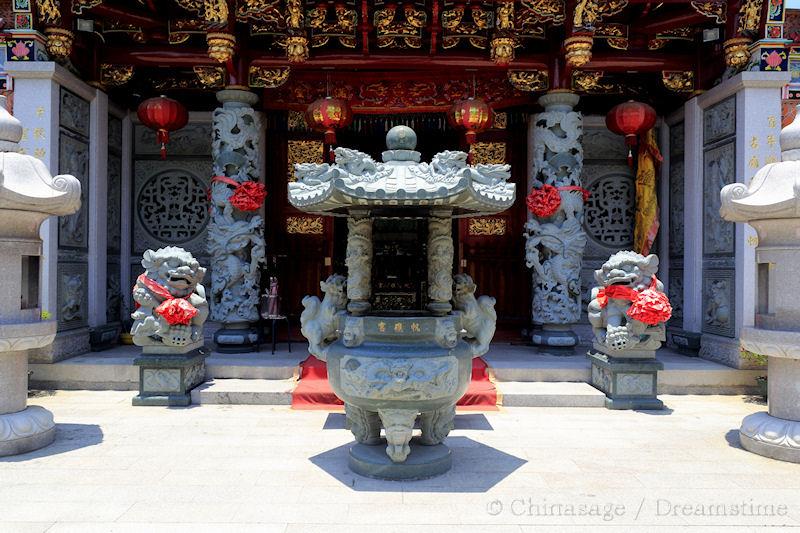Dao De Jing or Tao Te Ching
道德经 Dào dé jīng
This well known book is very different from other Chinese classics and is unique in being more widely read outside China than within it. Its popularity is down to its style; it is not anchored in Chinese history or religion and so it can be appreciated by people of any faith or nationality. The great sinologist Joseph Needham describes it as ‘the most profound and beautiful book in the Chinese language’. It talks of self cultivation, living in harmony with nature, humility and perseverance. Remarkably for such an early work it does not talk of gods or historical events or indeed any particular person, it is both simple and complex at the same time. It comprises 81 ‘chapters’ each of which is typically 15 lines in English translation and each can be printed on half a sheet of paper. (References to specific chapters is indicated by ‘ch.’ in the following.)
The Dao De Jing is a series of unconnected thoughts about how people should live together in harmony. It is like an anthology of poetry as it has no narrative, each chapter can be read independently. They are poems which give rise to deep contemplation. Many are statements of apparent paradoxes. For example to achieve things you should do nothing (ch. 37), to rule wisely you should not rule (ch.57), and to overcome the strong you should be weak (ch. 36). These contradictions set the case for a rejection of absolutes and dispense with the straitjacket of orthodoxy. The start of the very first chapter sets the tone for the whole work. The first line can be translated as ‘The Dao that can be named is not the true Dao’. In other words the Dao (way, path, philosophy) is formless and nebulous and can never be precisely tied down. Everyone has their own personal Dao and it can never be totally understood. A person who speaks about it does not know it. It is a far cry from the absolute conviction of some religions; every individual has to work out their own path through life for themselves. The rejection of a simple, clear meaning for Dao is reinforced by 20th century philosophy where ‘factual relativism ➚’ exposed the limitations of language to express ideas.

Each chapter often begins with a statement of something seemingly paradoxical; this is followed by a longer development of the idea. The commentary evades definite answers to the paradox; it is left to the reader to think it through. A common theme is about opposites and the transformation between them. This is the language of yin and yang which transform to each other, and although they are opposites they are also inseparable and interdependent. Yin is the female, passive and receptive while yang is male, active and aggressive. In these terms Daoism has been described as yin and Confucianism as yang. The feminine and the receptive win out over the domineering yang in many chapters. The concept of ‘mother’ and nurturing are yin concepts. Mountains are considered yang while valleys are yin. It is the mountains that are brittle and storm ravaged while the valleys are calm and permanent. Rivers, although seeking the lowest place can wear away mountains (ch.8). It is the balance of yin and yang that is the key, neither pole of the spectrum should dominate. Transformation and balance is also a key concept in another Chinese classic the Yi Jing.
The Dao governs without lauding over, it is not like a scientific law that is immutable and unambiguous. The Dao is everywhere; it is impartial and non judgmental. It is said that Earth follows Heaven, Heaven follows the Dao and the Dao follows what is natural (ch. 25). The Dao is inexpressible and indivisible, pervading all things (ch. 4). It is the universal life essence that is the natural flow (ch. 6). Things operate by their own internal logic and nature spontaneously (ch. 16). Water is essential to life but it seeks the lowest not the highest place. (ch. 8).

It is a book for our times as it often speaks of living in harmony with nature. Nature must be allowed to follow its own rhythms without human intervention (ch. 29). This approach was vindicated at an early date by the way water was managed. China has been plagued by rivers that frequently flood. Most ancient engineers who sought to mitigate flooding would suggest that the river should be straightened and firmly controlled. The Daoist way was to let the river do its own thing - to follow its natural propensity rather than fight it (ch. 8). This is the modern accepted way to approach river management. This is an example of the common theme of ‘wu wei’ action by inaction - letting nature take its course. Related to this is the usefulness of empty space. A bowl is useful because it has an empty space and in the same way a house is useful because of the empty space (rooms) within it (ch. 11). Emptiness of the mind is beneficial too as it removes worries and desires (ch. 44).Daoism is close to Buddhism in its advocacy of giving up desires, seeking contentment in owning little (ch.3). It seeks the gentle and pacifist course seeing violence as a regrettable last resort (chs.13, 31). It sees book learning as another kind of pointless acquisition (ch.20). It wants people to be content with what they have, free of ambition, pride and greed (ch. 19).
Although it is attributed to the Daoist sage Laozi there is little to support this idea. Many books were attributed to great figures of the past partly as homage and partly to increase circulation. The Dao de Jing has its origin at least 2,400 years ago, perhaps as early as 10,000 years ago and pre-dates Confucius. However this does not make it the oldest classic, some experts put the Yi Jing even earlier. In the early years there were many variations between copies and chapters would have been passed on in an oral not written tradition. There was a long period of time where the content was fluid when different chapters were added, removed or modified. Like many other Chinese classics the text only stabilized during the Han dynasty (206BCE - 220CE). It then became a designated classic as late as 737CE and became widely read among the general population rather than just scholars. At this time the Emperor had embraced Daoism and issued an edict that each household should have a copy. The Dao de Jing can be found inscribed on rocks at the top of mountains.

With the character ‘Dao’ in the title you would expect this to be a text for Daoists only but this is not really the case. The ‘way’ is a general concept used in other Chinese philosophies including the Analects of Confucius. The Daoist classic Zhuāng zǐ 庄子 gets much closer to the heart of Daoist philosophy. Another Daoist classic, the Taishang Ganying Pian ➚ (太上感应篇 Tài shàng gǎn yìng piān), also attributed to Laozi, is primarily a list of good and bad actions is far more popular in China. Daoism developed a number of branches on its long journey; the popular form of Daoism is concerned with rituals, festivals, births and deaths - an everyday religion rather than a contemplative philosophy.
Everything about the book is a little strange. For a start no-one can agree on an appropriate English translation for the title 道德经 Dào Dé Jīng. Literally these three characters mean ‘the way’, ‘virtue’ and ‘classic’ and so some have called it the ‘The way of virtue’ but it has also been translated as ‘The way and its power’, ‘The way of nature’, ‘The book of Laozi’ and the ‘Five thousand character classic’. The latter title is because originally it had about this many characters (compared to the Thousand Character Classic). The book is made up of two parts the ‘Dao Jing’ and the ‘De Jing’.
The book became somewhat jumbled over the centuries, a copy dating to about 175BCE was discovered in 1994 at Mawangdui ➚, Hunan and this shows that some lines and sometimes whole sections have become out of order. For example, part of chapter 64 actually belongs to chapter 63. This can easily happen because early books, before paper was invented, were written on vertical strips of bamboo that were tied together and could eaily get out of order. The second section ‘De’ (chs. 38-81) were originally before the first section ‘Dao’ (chs. 1-37) and more importantly it shows the final section (chs. 71-81) was written later than the rest in a different, inferior style around 300-250BCE at a time of greater turmoil. There seems to be a natural ending at chapter 70 as it somewhat reflects back to the subject of chapter 1. The loss of the last eleven chapters brings the total character count down to what was believed the original figure of 5,000 characters which the great historian Sima Qian recorded.

The continuing relevance of the Dao de Jing was reinforced when President Xi Jinping referred to it in a speech he gave on March 19, 2013. He quoted chapter 60 to outline the strategy of his new government - it should govern with as light a touch as possible. The Chapter likens government to frying small fish, if the cook keeps turning them over and poking them they disintegrate, the correct approach is to minimize contact and let them cook on their own. This shows the Daoist approach to government - minimal intervention, if everyone knows what to do then little management (wu wei action by inaction) is needed.
The Dao De Jing continues to be relevant. Its musings on the way people interact with nature ➚ is a very contemporary concern. We will always need to thinking about our relationship with other people and the natural world around us.
Translating the Dao De Jing
To achieve a genuine understanding of the Dao De Jing you need to read it in Chinese, it is one of several Chinese classics that is pretty much impossible to translate into English. In a similar way to classic poetry a big part of the challenge is that Chinese characters are used very sparingly. It is like a sequence of ideas or images without any supporting grammatical framework.
To demonstrate just how hard it is let us look at how chapter one could be translated. It soon becomes evident that to create readable English the translator is putting in a good degree of personal interpretation that is not evident in the original Chinese. It is just 56 characters (15 lines) long that are full of subtle meaning.
For each line the Chinese (characters and pinyin) is followed by the dictionary meaning of the individual characters in English. I am using the modern meanings which can often be misleading. From this a discussion on the translation follows and my tentative ‘translation’ suggested.
1. 道可道 Dào kě dào
[Dao] [can, may, certainly] [Dao]‘Dao’ can be translated as ‘direction, way, road or path’ I will use ‘Dao’ for convenience. The first three characters are very ambiguous in meaning and lead to divergent English translations. The simplest might be ‘the Dao is the Dao’ as that has a resonance in English like ‘calling a spade a spade’ hinting at the self-referential nature of naming things.
2. 非常道 Fēi cháng dào
[to not be, not] [always, frequently, common, constant] [Dao]The continuation refutes the previous part ‘it is not the eternal Dao’ - our definition is flawed, the Dao cannot be so easily tied down. Most translation use speech as the instrument of transfer giving the notion that it is the transmission of our idea of the Dao that is the obstacle not the concept in itself - something that cannot be expressed accurately in language.
The first two lines (six characters) are usually taken together to mean something like:
‘The Dao that can be spoken about is not the eternal Dao.’
3. 名可名 Míng kě míng
[name] [can, may, certainly] [name]This is the same as the first three characters with ‘name’ replacing ‘Dao’; it is a pattern that is lost in translation. We are in the realms of philosophy where ‘names’/’words’ have meanings that cannot be tied down with certainty. If all your life you have only seen white swans then ‘swan’ implies a large white bird. If when one day you see a black swan what you knew of as a ‘swan’ has to change. Names and concepts come from personal experience.
4. 非常名 Fēi cháng míng
[to not be, not, wrong, incorrect] [always, frequently, common, constant] [name]The pattern continues as these three characters are linked with line 2 with ‘name’ replacing ‘Dao’. English translations generally render it in this way:
‘The name that is used is not its true name.’
In just 12 characters with heavy repetition the Dao De Jing sets out its paradoxical store. The Dao is and is not the Dao; its name is and is not its name. The reader is immediately made to think about what is meant by ‘Dao’; if the reader has a firm notion, it is incorrect!
5. 无名天地之始 Wú míng tiān dì zhī shǐ
[not to have, no, none, not] [name] [sky, heaven] [earth] [(possessive particle)] [to begin, to start]Heaven and earth together usually means ‘everything’. Lines 1-4 looked at ‘name’ and ‘Dao’ so ‘name’ continues the narrative about origins. ‘No name’ might mean nameless or nothingness, possible a vague nod to the idea of a formless void before the creation of the Universe.
‘The nameless nothing is the origin of everything.’
6. 有名万物之母 Yǒu míng wàn wù zhī mǔ
[to have, to exist] [name] [all living things] [(possessive particle)] [mother, origin, source]This is another struggle to untangle, line 5 is about the nameless; now it is the all named things that have a shared mother (origin). This is the first use of a gendered character and show the primacy of the feminine as nurturer.
‘It is the mother of all things.’
7. 故常无欲 Gù cháng wú yù
[happening, reason, cause] [always, ever, often] [not to have, none] [to wish for, to desire]This gives the impression of ‘not having desire’ but the translations of this line are strongly divergent in meaning it is usually translated combined with the following line.
8. 以观其妙 Yǐ guān qí miào
[according to, because] [to look at, to watch] [(possessive particle)] [clever, wonderful]Lines 7 and 8 seem to be about the contemplation of the Dao, the nothing and everything.
‘These are the wonders to be contemplated.’
9. 常有欲 Cháng yǒu yù
[always, ever, often] [to have, there is] [desire, passion]Usually combined with the next line for translation.
10. 以观其徼 Yǐ guān qí jiào
[according to, so as to] [to look at, to watch] [(possessive particle)] [boundary]The two lines together mean something like:
‘Always strive to contemplate the wonder to its limits.’
11. 此两者 Cǐ liǎng zhě
[this,] [both sides]12. 同出而异名 Tóng chū ér yì míng
[like, similar] [to go out, to come out] [and, as well as] [different, other] [name]The ‘two sides’ are the ‘named’ and ‘nameless’ or ‘everything’ and ‘nothing’.
‘Everything and nothing have the same origin but are different.’
13. 同谓之玄 Tóng wèi zhī xuán
[like, similar] [to say, to name] [(possessive particle)] [black, mysterious]The mysterious nature of the formed and formless are noted.
‘— they are both mysterious and profound.’
14. 玄之又玄 Xuán zhī yòu xuán
[black, mysterious] [(possessive particle)] [(once) again, also] [black, mysterious]The repetition of ‘xuán’ three times in two lines underlines its importance.
15. 众妙之门 Zhòng miào zhī mén
[many, numerous, crowd] [clever, wonderful] [(possessive particle)] [gate, door]The last two lines are usually combined together to give meaning on the lines of:
‘The mystery is truly deep; it is the threshold of the wonderful.’
Chapter 1 translated
Here are all our translated lines gathered together:
The Dao that can be spoken about is not the eternal Dao.
The name that is used is not its true name.
The nameless nothing is the origin of everything.
It is the mother of all things.
These are the wonders to be contemplated.
Always strive to contemplate the wonder to its limits.
Everything and nothing have the same origin but are different
— they are both mysterious and profound
The mystery is truly deep; it is the threshold of the wonderful.
Chapter one introduces the reader to the vast scope of the Dao and how impossible it is to fully understand it. It speaks of vague origins out of nothing and the need to think and contemplate the subject. The paradoxes of knowing/not knowing and named/unnamed are deep philosophical puzzles that can never be solved. It entices the reader to read more of the mysteries and wonders in the Dao De Jing.